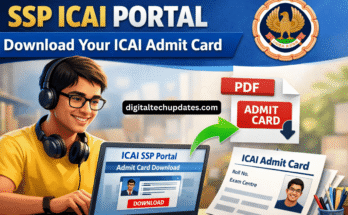Educationists and tutors worldwide are devising new means and ideas to make the learning process fun and engaging. Teachers have taken the challenge of coming up with new instructional methods to make remote learning exciting and engaging.
Remote learning requires the educators to be more innovative and devise new ways to deliver the content, apart from the traditional methods that most learners used to. However, teachers cannot overlook the traditional process since they form the basis of the innovations and new content delivery methods. Below are some of the ways to make remote learning effective.
Technology as a tool to bring joy to the process of learning
Most of the content delivery has taken place using technology. The use of videos, apps, films makes the learning process more engaging and fun. Technology also enhances the deeper understanding of the content by students as they can create self-expression and self-exploration.
Students can also express their learning through technology by using photography, drawing, music, and doodling, making the learning process more engaging to the students and the tutors.
Making the lesson lively
An easy way to entice learners to enjoy learning is by the use of a pragmatic way. The level of understanding by the students is high when models or simulations are used in a lesson. There is a very high retention rate if the learners define, analyze, create and evaluate on their own. The experimental approach to learning is more effective to the learners as it is more engaging. Teachers should encourage the students to use the practical method for a better understanding of the concept.
Collaborative pedagogy
Collaborative pedagogy means the science of teaching and learning together. When learners Work together in groups, they make the learning process more exciting and enjoyable. Project-based learning is one of the approaches where children learn various topics in groups through problem-solving.
Collaborative pedagogy is one of the tools that the teacher needs to use to make online learning more engaging to the students. The online platform is where the education system is heading due to technological advancement, and the above scenario is essential to 21st-century competency. It will assist in the current life challenges.
Connecting beyond the virtual world
The transition from traditional teaching methods to the online platform is not that easy as it’s important to monitor students’ emotional well-being closely. Facilitators should devise means to engage with learners one on one level.
The learning process is an emotional one where the tutor can connect with learners and their emotions. At the end of the lesson, the student and the teacher should be on the same page of understanding, which should be reviewed regularly. In most cases, the learner has the room to express themselves, and the teacher must offer a listening ear and dress their concerns.
In the virtual world, the learners should look at the quality of the assignment and not the quantity is given to them. They should identify the areas with problems and ask for further direction from their facilitators.
Offline shift
When learners are done with the online learning sessions, it is essential to insist that learning continues. Children these days are online fanatics, and if not controlled, it might turn out to be destructive rather than beneficial.
Parents are more involved in the learning process as the home space is converted to a classroom. With the assistance of the parents, the learner can understand the newly learned concepts. Parents, teachers, and facilitators play an important role in the students’ lives. Schools should continue inventing new ways to make the learning process effective in remote environments.
Dole out new information in brief doses.
When giving out new information to the students, it is important to give it in doses. According to research, the student’s concentration in longer videos drops significantly than in shorter videos. In the online class, break it into smaller segments of about 15 minutes or 20 minutes more so if the subject matter is new or if the students are younger. Breaking the content to shorter sessions and resuming to the same point, later on, takes advantage of what psychologists refer to as the spacing effect, which boosts learning.
Balance synchronous and asynchronous learning
Remote learning is done in two ways, either student accessing the lesson simultaneously or at different times. Synchronous lessons are harder to engineer as they do not provide room for practice. The facilitator needs to include an online session where all students are present simultaneously.
The purpose of that is to provide feedback to the facilitator and the inclusivity of the learners. Fortunately, synchronous learning enables the teacher to connect with the student effectively and bring together everyone involved in the process. That’s because parent supervision for asynchronous learning can be a disaster.




